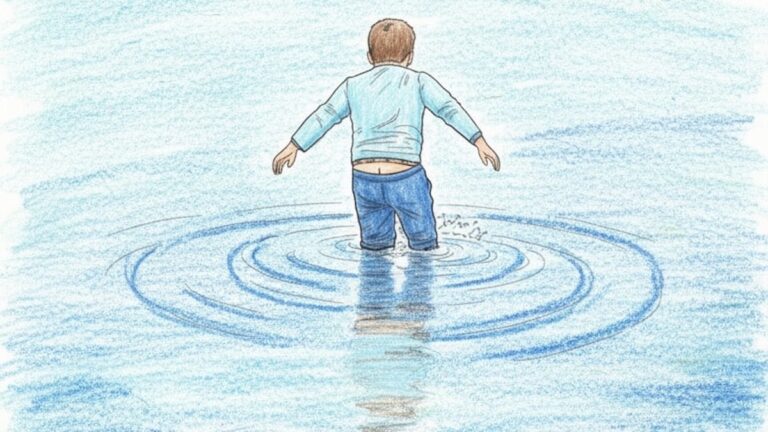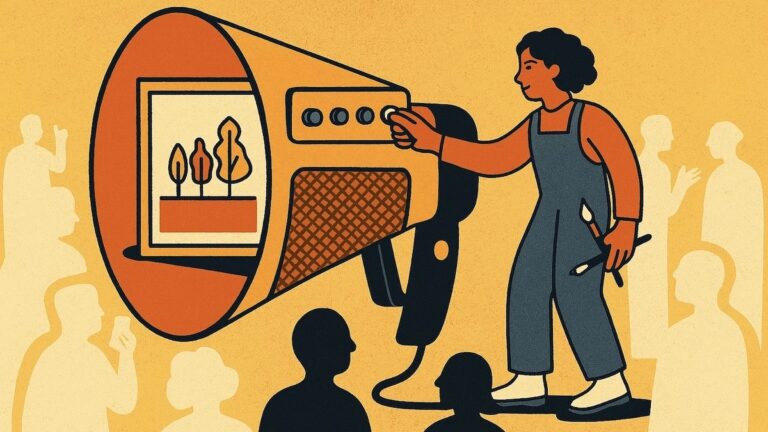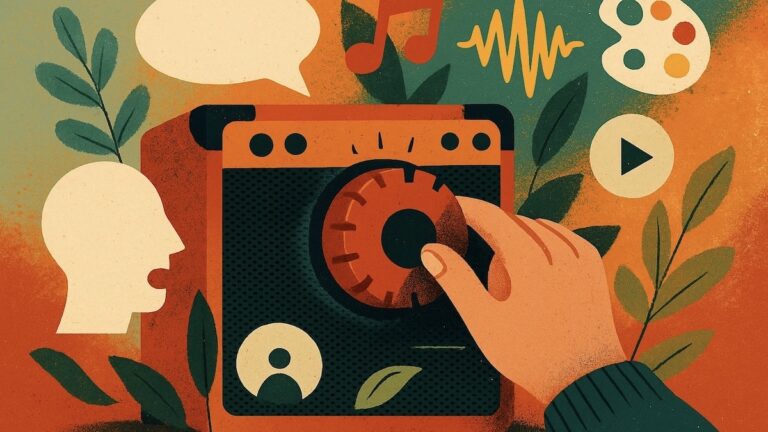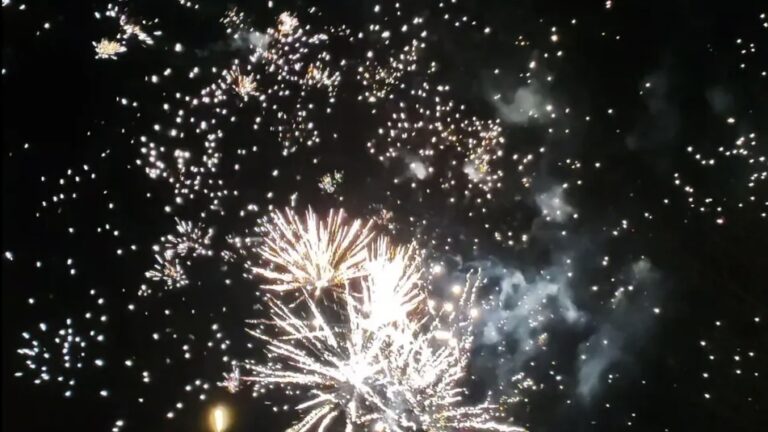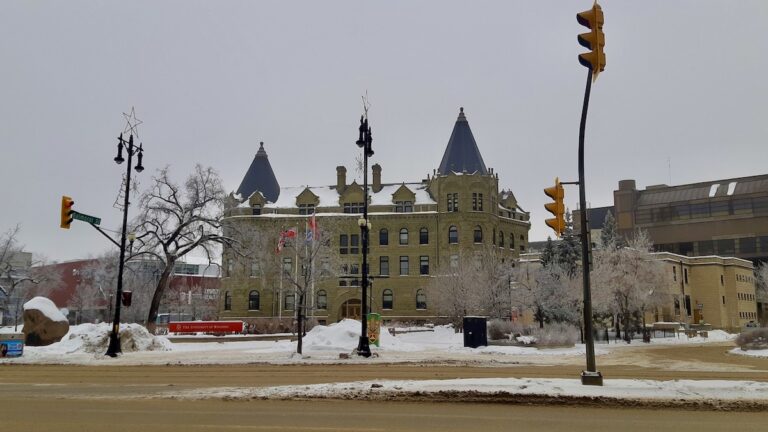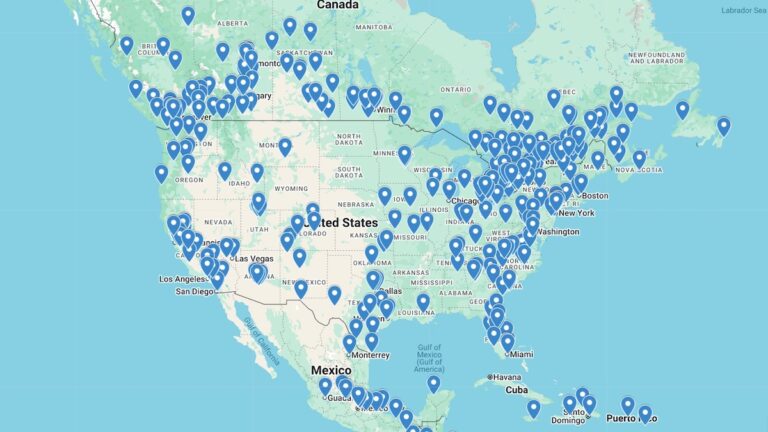
The Art of Resourcefulness
The best art supply store I ever found wasn’t an art supply store at all. It was a dusty hardware co-op on the edge of town, smelling of sawdust and machine oil. I walked in looking for a specific bolt and walked out with a new way of seeing the world. The clean, utilitarian lines of copper pipe, the rich textures of burlap sacks, the unexpected shades in a tray of mismatched house paint—suddenly, everything looked like a possibility. This is the first lesson for any artist working in a remote community: your greatest creative asset isn’t your budget; it’s your perspective. The idea that we need expensive, specialized materials to make powerful art is a myth. Scarcity isn’t a wall. It’s a doorway into a more resourceful, resilient, and ultimately, more personal way of creating.
Look Beyond the Art Supply Catalog
When you live hours from the nearest city, waiting for a shipment of Belgian linen or that perfect tube of cadmium red can feel like a creative roadblock. But the materials for your next project are likely much closer than you think. It’s time to redefine what constitutes an “art material” and start exploring the landscape right outside your door.
The Hardware Store as Your Studio
Think of your local hardware or building supply store as your new primary canvas. Forget the tiny, expensive panels from the art store; a sheet of plywood or MDF can be cut into a dozen surfaces. House paint, especially the “oops” tins sold at a discount, offers a durable and affordable alternative to acrylics. I’ve used roofing tar for deep, textured blacks and joint compound to build up sculptural surfaces on canvas. Look at plumbing fittings, wire mesh, and scrap lumber not for their intended function, but for their form, texture, and line. The challenge is to see the artistic potential in the purely practical. This practice doesn’t just save you money; it infuses your work with a raw, immediate quality that can’t be bought.
The Land as Your Pigment Palette
Your environment is a living library of color and texture. Foraging for materials is one of the oldest human art forms, and it’s a powerful way to connect your work directly to your place. Start simple. Charcoal from a recent campfire can be ground into a beautiful drawing medium. Rich, loamy soil mixed with a binder like egg yolk or linseed oil creates stunning earth pigments—ochres, umbers, and siennas. Berries, flower petals, and even rust can be used to create dyes and stains. A word of caution: practice this with respect and knowledge. Learn to identify local plants, take only what you need, and be mindful of the ecosystem you’re a part of. This isn’t just about finding free supplies; it’s about building a relationship with the land that feeds your art.
Rethink Your Tools and Workspace
A sustainable practice isn’t just about what you make with; it’s also about where and how you make it. The romantic image of the sprawling, light-filled studio is a luxury few can afford, but creativity doesn’t require high ceilings or a north-facing window. It requires a dedicated corner and the ingenuity to make it work.
Transforming Found and Borrowed Spaces
Your studio can be anywhere you decide it is. I’ve worked in a corner of a shared garage, a disused shed I insulated with scavenged materials, and even on my kitchen table after the kids went to bed. Look around your community for underutilized spaces. Could you set up in the back room of a community hall in exchange for helping with upkeep? Does a local business have a storage area they’d be willing to let you use? The key is to be flexible and see the potential in imperfection. A space with history and limitations often brings an unexpected character to the work created within it.
Adopt a Mindset of Creative Scarcity
Ultimately, resourcefulness is more than a set of techniques; it’s a mindset. It’s about embracing limitations as a powerful creative force. This shift in thinking is what will sustain your practice through lean times and make your work uniquely your own.
The Unmatched Power of Creative Constraints
Some of the most innovative art in history has come from artists working with less. When you don’t have every color available, you become a master of color mixing. When you only have a few tools, you learn to use them with incredible versatility. These constraints force you to problem-solve, to invent, and to push your materials—and yourself—in new directions. The result is a visual language that is entirely yours, born not from unlimited choice but from focused, creative necessity. Your limitations become your signature style. This approach builds a foundation for a truly sustainable artistic practice, one that relies on your ingenuity rather than your income. It’s about creating a cycle where your art is fueled by the world immediately around you, making you a more resilient and deeply rooted artist.
This is your starting block. By learning to see the potential in the overlooked and reimagining the resources at hand, you’re not just making art on a budget. You are building a practice that is authentic, sustainable, and inseparable from the place you call home.
Our summer arts program is designed to empower artists and the arts sector across Winnipeg, Manitoba, and Northwestern Ontario. By providing focused opportunities in professional development and storytelling, we’re helping artists gain the essential tools they need to grow their practice and build a lasting career. Our program was originally seeded in 2022 with funding from the Canada Council for the Arts Digital Greenhouse. This summer’s program is made possible thanks to the support of the Minneapolis College of Art and Design and the Ontario Arts Council, whose funding is helping to support this season’s valuable mentorship and internship program.

